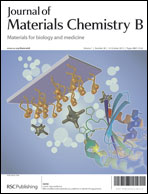Extrusion printing of ionic–covalent entanglement hydrogels with high toughness
Abstract
Three-dimensional (3D) printing of hydrogels has recently been investigated for use in tissue engineering applications. One major limitation in the use of synthetic hydrogels is their poor mechanical robustness but the development of ‘tough hydrogels’ in conjunction with additive fabrication techniques will accelerate the advancement of many technologies including soft robotics, bionic implants, sensors and controlled release systems. This article demonstrates that ionic–covalent entanglement (ICE) gels can be fabricated through a modified extrusion printing process that facilitates in situ photopolymerisation. The rheological properties of alginate–


 Please wait while we load your content...
Please wait while we load your content...